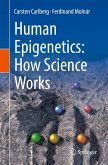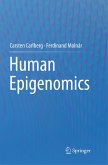
Broschiertes Buch
1st edition 2019
5. Oktober 2019
Springer / Springer International Publishing / Springer, Berlin
978-3-030-22906-1
| eBook, PDF | 61,95 € |

Broschiertes Buch
Softcover reprint of the original 1st ed. 2018
30. Januar 2019
Springer / Springer Nature Singapore / Springer, Berlin
978-981-13-5660-5
| Gebundenes Buch | 67,99 € | |
| eBook, PDF | 53,95 € |
Broschiertes Buch
2. Aufl.
7. Juni 2018
Springer / Springer Netherlands
978-94-024-1397-7
| Gebundenes Buch | 82,99 € | |
| eBook, PDF | ab 65,95 € |
Broschiertes Buch
Softcover reprint of the original 1st ed. 2016
30. Mai 2018
Springer / Springer International Publishing / Springer, Berlin
978-3-319-80803-1
| Gebundenes Buch | 97,99 € | |
| eBook, PDF | 73,95 € |
Gebundenes Buch
1st ed. 2018
12. Februar 2018
Springer / Springer Nature Singapore / Springer, Berlin
978-981-10-7613-8
Gebundenes Buch
2. Aufl.
16. Juni 2016
Springer / Springer Netherlands / Springer, Berlin
978-94-017-7740-7
Gebundenes Buch
1st ed. 2016
21. Juni 2016
Springer / Springer International Publishing / Springer, Berlin
978-3-319-30413-7
eBook, PDF
4. Oktober 2024
Springer International Publishing
eBook, PDF
29. Oktober 2020
Springer International Publishing
eBook, PDF
14. Februar 2020
Springer International Publishing
eBook, PDF
24. September 2019
Springer International Publishing
Ähnlichkeitssuche: Fact®Finder von OMIKRON
